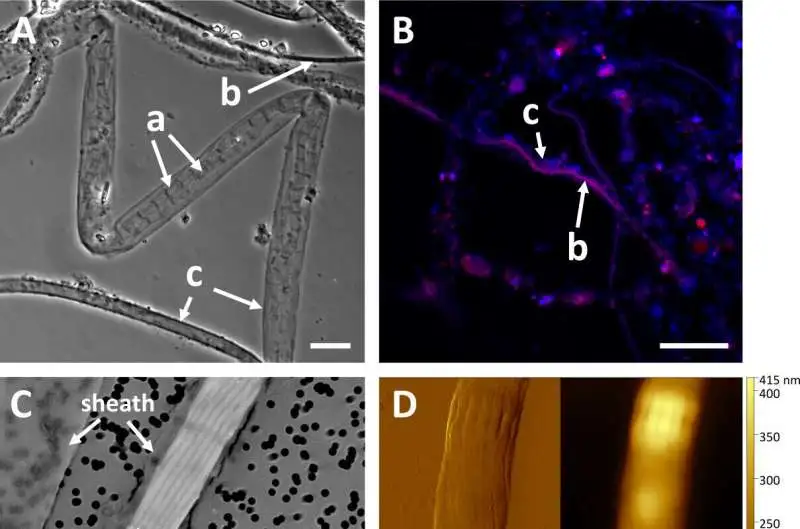Scientists have identified a novel species of bacteria that acts as electrical wiring, potentially ushering in a new era of bioelectronic devices for use in medicine, industry, food safety, and environmental monitoring and cleanup.
The researchers who discovered the new cable bacteria species in a mud flat at the Oregon coast named it Ca. Electrothrix yaqonensis in honor of the Native Americans of the region where the species was found.
Findings were published today in Applied and Environmental Microbiology.
Cheng Li, a postdoctoral researcher at Oregon State University at the time of the research, and Clare Reimers, distinguished professor emerita in the OSU College of Earth, Ocean, and Atmospheric Sciences, identified the new species in intertidal sediment samples from the Yaquina Bay estuary.
Cable bacteria consist of rod-shaped cells attached end to end with a shared outer membrane, forming filaments that can reach several centimeters in length. Their electrical conductivity, unusual among bacteria, is an adaptation that optimizes their metabolic processes in the sediment environments in which they live.
The new species features metabolic pathways and genes that are a mix of the Ca. Electrothrix genus and the other known cable bacteria genus, Ca. Electronema.
“This new species seems to be a bridge, an early branch within the Ca. Electrothrix clade, which suggests it could provide new insights into how these bacteria evolved and how they might function in different environments,” said Li, who in June will return to Oregon State as an assistant professor in the College of Agricultural Sciences following a stint on the faculty of James Madison University.
“It stands out from all other described cable bacteria species in terms of its metabolic potential, and it has distinctive structural features, including pronounced surface ridges, up to three times wider than those seen in other species, that house highly conductive fibers made of unique, nickel-based molecules.”
The fibers enable the bacteria to perform long-distance electron transport, connecting electron acceptors like oxygen or nitrate at the sediment surface with donors like sulfide in deeper sediment layers. The bacteria’s ability to participate in reduction-oxidation reactions over significant distances gives it a key role in sediment geochemistry and nutrient cycling.
“These bacteria can transfer electrons to clean up pollutants, so they could be used to remove harmful substances from sediments,” Li said. “Also, their design of a highly conductive nickel protein can possibly inspire new bioelectronics.”
Cable bacteria can live under diverse climatic conditions and are found in various environments, including both freshwater and saltwater sediments.
Ca. Electrothrix yaqonensis draws its name from the Yaqona people, whose ancestral lands encompassed Yaquina Bay. Yaqona referred to the bay and river that made up much of their homeland, as well as to the people themselves.
Today, Yaqona descendants are part of the Confederated Tribes of Siletz Indians, with whom the researchers worked on coming up with a name for the new species.
“Naming an ecologically important bacterium after a Tribe recognizes its historical bond with the land and acknowledges its enduring contributions to ecological knowledge and sustainability,” Li said.
Scientists from the University of Antwerp, Delft University of Technology and the University of Vienna also participated in the research, which was supported by the Office of Naval Research, Oregon Sea Grant, Research Foundation Flanders, the University of Antwerp, the EU Marie Sklodowska-Curie Cofund and the European Innovation Council.
